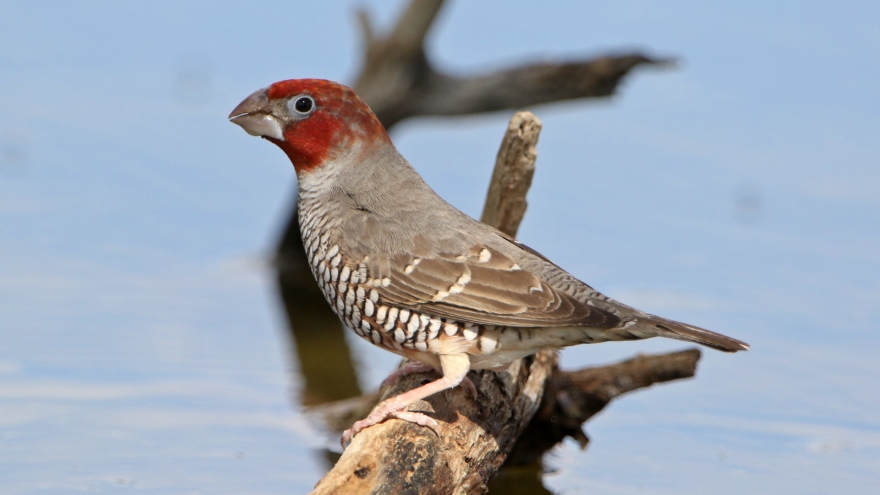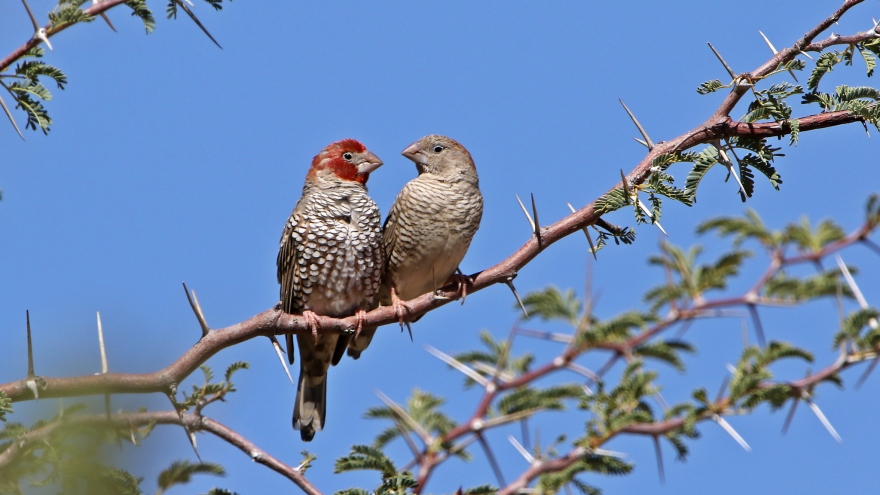The aberdeen finch—known commonly as the red-headed finch outside of Australia—is a medium-sized finch found throughout southern Africa. The species is extremely rare in Australian aviaries, with many of the remaining stock thought to be hybridized with the closely-related and more common cut-throat finch.

Housing & Compatibility
Aberdeen finches can be housed as single pairs, either on their own or as part of a mixed collection. Due to their rarity it’s best to give them an aviary to themselves if possible. They should never be housed with or ajacent to cut-throat finches due to the risk of hybridization
Aberdeen finches can be assertive to smaller finches, so it’s important to choose their aviary companions wisely. Providing a large, sparsely-populated planted aviary with plenty of hiding places is the best way to manage their aggression.
Diet & Feeding
A quality seed mix including canary seed, various millets and panicum forms the basis of the aberdeen finch’s diet. Seed lacks many essential vitamins and minerals which must be compensated for by introducing other foods. Sprouting seed increases its nutritional value and is a cheap way to improve your bird’s health. Freshly grown green seed heads should also be offered frequently.
Some leafy greens should be provided throughout the year. Kale, bok choy, endive and silverbeet are the most nutritious and will be readily eaten. Spinach can also be given, but only sparingly as it can contribute to calcium deficiency.
Live food is an important component of the aberdeen finch’s diet and should be provided throughout the year – especially during the breeding season. Mealworms, maggots, termites, and small crickets will be consumed readily. Commercial soft finch food mixes can also be provided for an added nutrient boost.

Breeding Aberdeen Finches
Aberdeen finches breed best in spring and autumn, with a hen bird that is at least 12 months of age.
In the wild, aberdeen finches do not construct nests, instead preferring to claim nests abandoned by other birds. Because of this, many pairs are poor nest builders who need a little assistance from humans. A handful of grass shaped into a ring and stuffed inside a nesting receptacle is enough to get them started.
A wide variety of artificial nests will be accepted, however they tend to prefer a medium-sized commercial cane nest. They will not re-use a nest, so multiple receptacles need to be provided. Aberdeen finches will tolerate nest inspections, but they should be avoided unless absolutely necessary.
They typically lay 3-6 eggs in each clutch, which are incubated by both parents for approximately 14 days. Young birds fledge the nest at three weeks of age and are usually independent about three weeks later. In cages and small aviaries it’s necessary to remove the young birds from the aviary once they become independent, especially if the parents are to continue breeding.
Sexing
Easy to visually sex at maturity, as only the male birds have red feathers on their head.
Mutations
There are no established mutations in Australia. Odd-looking birds are most likely the result of hybridization with another species.
Health & Lifespan
Aberdeen finches do not spend a great deal of time on the aviary floor, making them less susceptible to parasites than many other species. Nevertheless, a strict worming and parasite control regime is essential to ensure the long-term health of any finch collection.
The captive lifespan of aberdeen finches in Australian aviculture is not well documented, however the closely-related cut-throat finch will live for 8-10 years. We can assume the aberdeen finch’s lifespan is fairly similar.